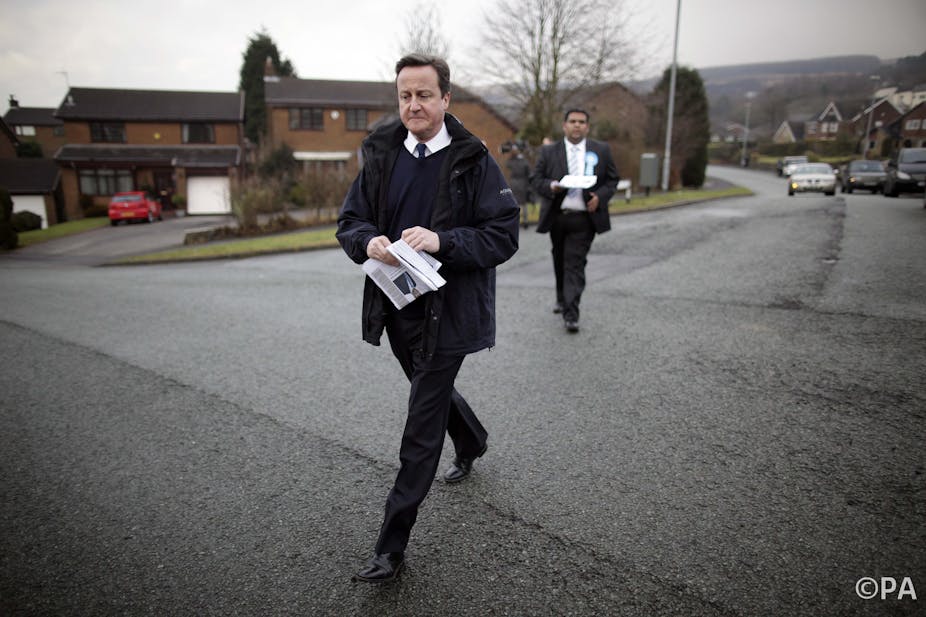An analysis of the constituencies in North West England suggests neither the Conservatives or Labour can gain sufficient ground to win a wider parliamentary majority.
By gathering information on key seats, we have found that Labour can only hope to steal four in the region and that none of the other parties can expect to make any significant gains either.
North West England will be a crucial battleground. It is home to 72 constituencies, of which 28 are marginal – the joint highest (with the South West) of any English region. If either a majority Labour or Conservative government is to emerge after May 7, they’d need to make a healthy number of net gains here.
Labour stands little chance of securing a workable majority without winning at least 14 additional North West seats. For the Conservatives, a majority will remain out of reach if they fail to win target seats in places like Bolton West and Wirral South.
But it looks as though neither party will succeed.

Only four seats are on track to change hands – and all represent Labour gains. The party will take two seats from the Conservatives (in Warrington South and Lancaster and Fleetwood) and two from the Liberal Democrats (in Manchester Withington and Burnley).
Admittedly, a few more seats than this could change hands (my colleague Jon Tonge is more persuaded than I am that Labour will also win Morecambe and Lunesdale and Weaver Vale, for example). But without some dramatic developments between now and May, the number of North West seats making the switch looks certain to be in single figures.
If the pattern in the region is broadly as we suggest, it seems certain that neither of the two main parties will be able to command a parliamentary majority.
A defensive election
The two main parties look to be in a strong position to defend what they won in 2010 but seem less well placed to launch attacks on their target seats – hence the likelihood of a stalemate.
In a number of Labour targets, constituency polls and local election results suggest the party simply does not have enough of a lead (and sometimes none at all) over the Conservative incumbent. What’s more, the financial disadvantage of the Labour challengers in numerous North West marginals is highly apparent. In Wirral West, a Labour target, we found that the local Conservative Association has secured £77,000 in declarable donations since the last general election. The Constituency Labour Party in the locality has registered a total of £3,000 over the same period.
There is ample evidence to suggest that Liberal Democrat donors have been as strategic as their Tory counterparts in directing large donations to the constituencies they won in 2010. In all six of the seats currently held by the Liberal Democrats, donations to the local party are far in excess of those which have reached their primary rival.
In the four North West constituencies where Liberal Democrat parties have managed to remain the largest party by vote share in local elections, there is every chance that the party will be able to deploy these resources to retain the seats.
As for UKIP, we conclude that parliamentary representation in the North West will elude them in 2015. However, the party will secure far higher vote shares across the region than in 2010 and can expect to finish second in a number of safe Labour seats. A runner-up spot in Bootle, where UKIP deputy leader Paul Nuttall is standing, is a virtual certainty.
Far from the finishing line
Our predictions are based on sets of statistical evidence for each constituency, which were used to make informed judgements about the probable outcome in each.
This meant looking at polling data on voting intentions in key marginal seats, votes in the most recent local elections and the resources each party is likely to have to spend on campaigning in the area. We also modelled the likely impact of Liberal Democrat deserters switching disproportionally to Labour rather than the Conservatives (a pattern consistently evidenced by national opinion polls).
Of course, making predictions based on uneven evidence weeks before polling day carries obvious risks. One of the two main parties may yet pull ahead in the polls. And it could be that Labour’s vow to win the ground war with four million conversations will compensate for its relative campaign poverty.
It is also evident that electoral stalemate in the North West will not be replicated elsewhere, most notably Scotland and, almost certainly, South West England.
Yet, if our analysis is even close to being right, the voters of the North West will play a leading role in denying Labour a majority in 2015 – just as they did with the Conservatives in 2010.
The research described in this article was carried out in collaboration with Jon Tonge.

